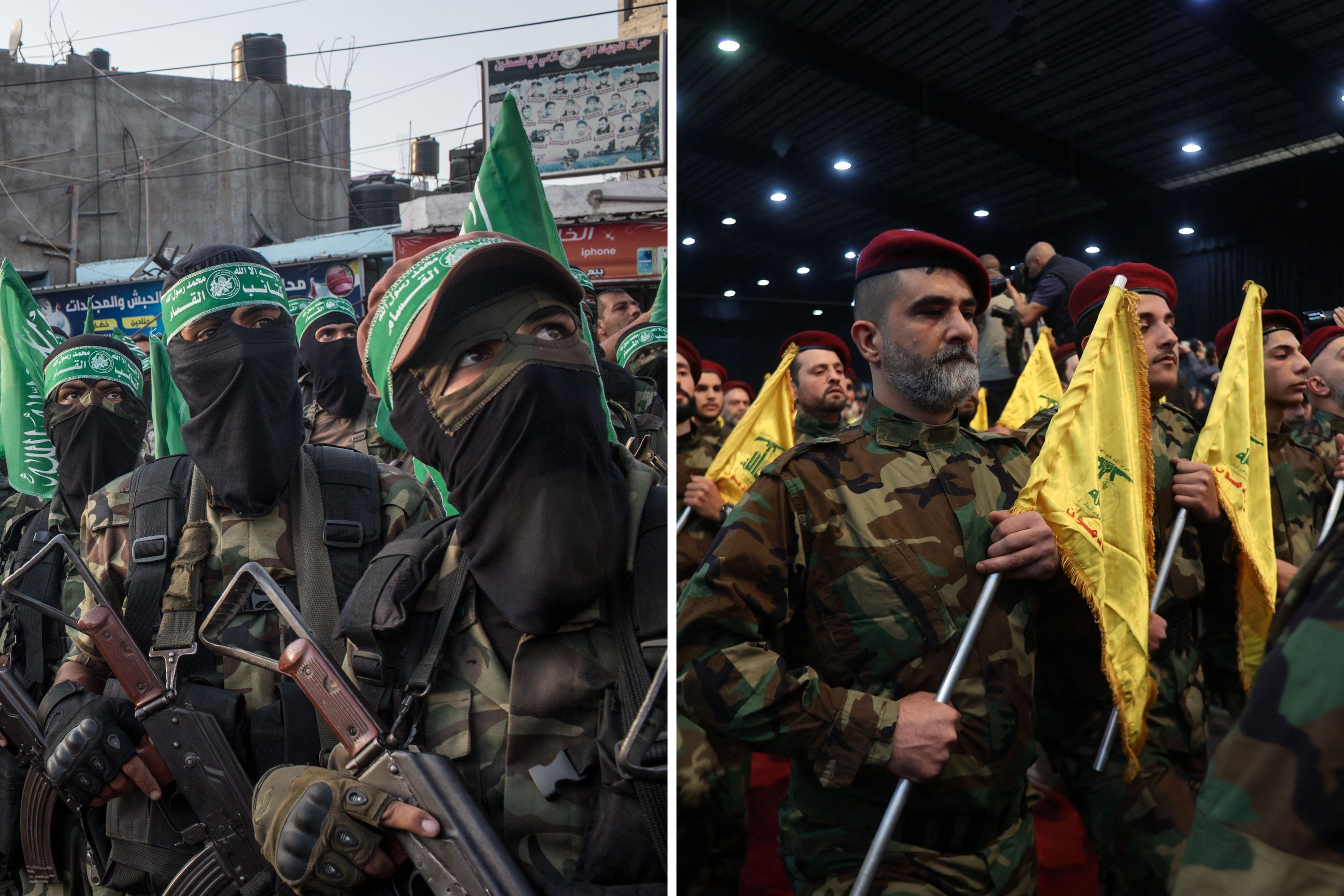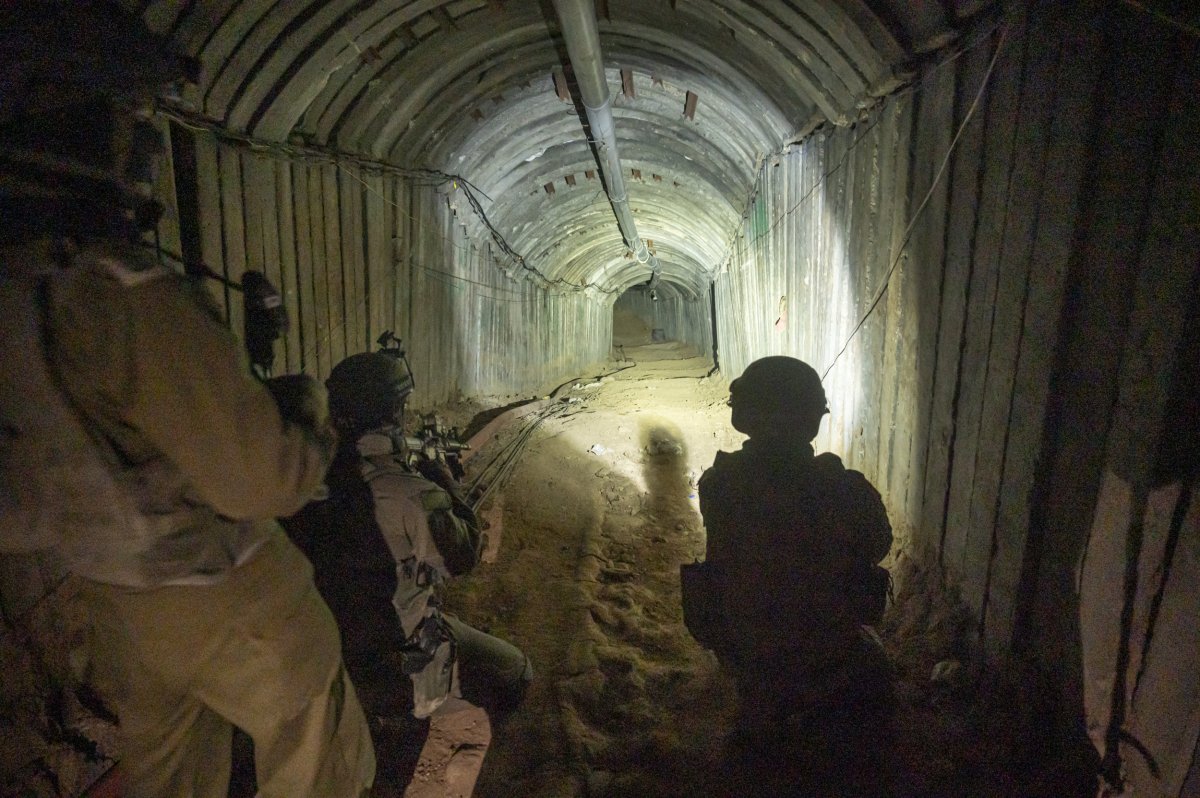Uncommon Knowledge
Newsweek is committed to challenging conventional wisdom and finding connections in the search for common ground.

More than eight months after Hamas launched its surprise attack on Israel, triggering a brutal war in Gaza that shows no immediate signs of abating, a different Iran-backed militant group is threatening to draw Israel into a new front on its northern border.
Increasing clashes between Hezbollah and the Israel Defense Forces (IDF) along the Israel-Lebanon border are raising fears that the conflict in Gaza could spread into an all-out regional conflagration.
Hamas and Hezbollah, both labeled as terrorist organizations by the U.S., EU and several other governments, are skilled in asymmetrical warfare. Both groups are supported by Iran and consider Israel to be their arch enemy. But while Hamas is more or less contained to Gaza — with its brutal Oct. 7 assault on southern Israel a notable exception — Hezbollah has transformed itself over the years, under the leadership of Secretary-General Hassan Nasrallah, into an influential political party and regional powerbroker.
“Hamas has increasingly received funding, weapons, and training from Iran, but it is not as controlled by Iran as Hezbollah, which is almost entirely backed by Iran and follows its directives,” Julie M. Norman, associate professor in politics and international relations at UCL, recently wrote for The Conversation.
Here is an overview of the military capabilities of both militant groups.
Hamas, established in 1987 as an offshoot of the Muslim Brotherhood, operates primarily in the Gaza Strip. Its military wing, known as the al-Qassam Brigades, has developed a network of tunnels underneath Gaza that it uses for guerrilla warfare, making detection difficult for Israeli forces.

Hamas is well-known for producing and acquiring improvised rockets, mortars, explosives, anti-tank guided missiles, and shoulder-launched anti-aircraft missiles (MANPADS). The group tends to focus on quantity over quality, moving its weaponry through its extensive tunnel network to evade detection.
Hamas has a range of rockets, including the M-75, R-160, and J-80, capable of reaching up to 50 miles. These rockets, along with Iranian and Syrian-sourced long-range rockets, are crucial to their offensive capabilities. Estimates of their rocket stockpile vary widely, with numbers ranging from 5,000 to 20,000, according to Israeli officials.
Some reports suggest Hamas also has a significant supply of anti-tank guided missiles, including the Russian-made Kornet and North Korean Bolsai missiles, which pose a threat to Israeli ground forces.
Hamas has recently introduced suicide drones modeled after the Iranian Ababil-2 for targeting and kamikaze missions. When it comes to small arms, Hamas fighters primarily use older Chinese and Russian-made assault rifles, machine guns and grenades. Their arsenal includes AK-47 variants, sniper rifles, rocket-propelled grenades and heavy machine guns.
After months of grinding war, Hamas has lost a significant chunk of its fighting force, though those estimates vary widely. Reports indicate that Hamas originally had around 30,000 fighters before Oct. 7. The Israel Defense Forces (IDF) claim to have killed approximately 12,000 Hamas operatives since then.
Hezbollah, founded in 1982 and primarily based in Lebanon, has far more advanced military capabilities compared to Hamas. With substantial funding and supplies from its patrons in Tehran, Hezbollah’s arsenal includes sophisticated rockets, missiles, drones and anti-ship weapons.

Israel believes Hezbollah possesses around 150,000 rockets and missiles, including the Iranian Fateh-110 and Zelzal-2, capable of striking deep into Israeli territory with high precision. This large and sophisticated arsenal has the potential to overwhelm Israel’s Iron Dome air-defense system in the event of an all-out war.
The group also extensively employs drones, such as the Shahed 136, for reconnaissance and offensive operations, enhancing Hezbollah’s ability to gather intelligence and carry out targeted attacks.
Hezbollah’s arsenal includes advanced Russian-made Yakhont and Chinese Silkworm anti-ship missiles, each with a range of about 186 miles. Although Israeli air superiority largely remains unchallenged, Hezbollah’s anti-aircraft defenses have seen marked improvements.
With over 100,000 fighters as claimed by Nasrallah, its long-serving leader, Hezbollah boasts a fighting force considerably larger than that of Hamas. And like Hamas, the group has developed an extensive network of tunnels in southern Lebanon, providing strategic advantages and protection against Israeli airstrikes.
Hezbollah’s military strategy involves the use of precision-guided munitions and high-yield missiles that represent a significant threat to specific targets that eclipses the less-sophisticated rockets and mortars lobbed into Israel by Hamas.
The Lebanese group’s readiness for large-scale conflict, combined with its advanced arsenal, presents a formidable challenge to Israeli defense systems — which partially explains why the U.S. and Israel’s other allies have been urging calm.
Newsweek is committed to challenging conventional wisdom and finding connections in the search for common ground.
Newsweek is committed to challenging conventional wisdom and finding connections in the search for common ground.